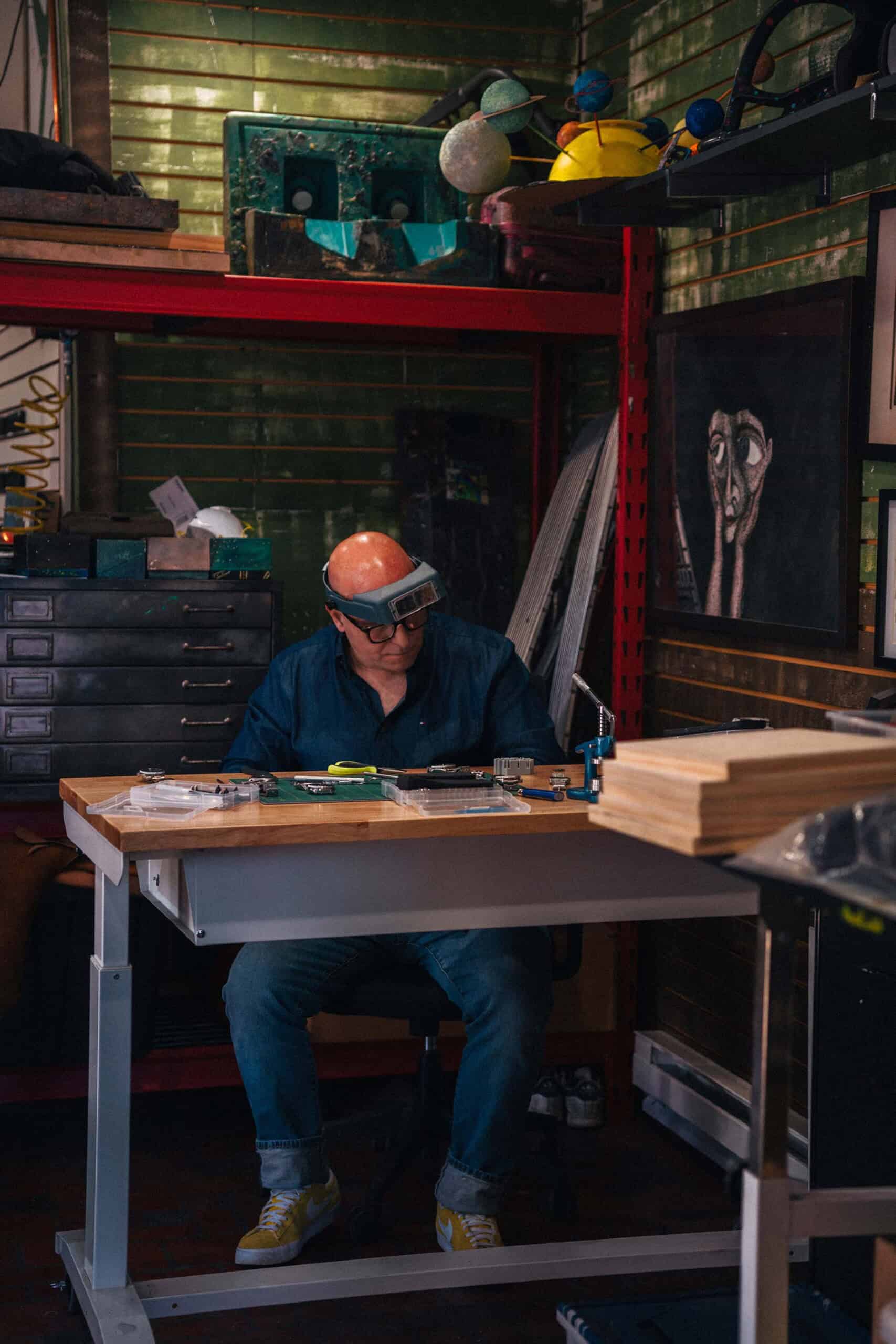
There are few things as commonly romanticized as a creative career, but for some, art’s siren song is heard just a little bit louder. For ROCS mastermind Richard Gonçalves, it was a sound that captured his ear early in life and would eventually rise above the clanking of tools and the chatter and bark of flat-six engines stirring to life in his family’s New Jersey Porsche service shop. For Gonçalves, art’s call eventually became so undeniable that he had no choice but to reevaluate his entire professional life and risk a successful business in order to reconcile the two. With ROCS, Gonçalves has done just that.
Adopting air-cooled Porsche 911s as his primary medium, ROCS allows Goncalves to apply his arts practice to the beloved German sports cars he’s known and worked on his entire life. The risk has seemingly paid off as Gonçalves’ whimsical builds have made a serious splash in the vintage Porsche community, with his remarkably original, patinated “art car” take on hot-rod 911s fast becoming an instantly recognizable signature style. Gonçalves has also found a horological outlet for his signature heavy patina style with a line of wildly modified Seikos he crafts under the name AKA ROCS.
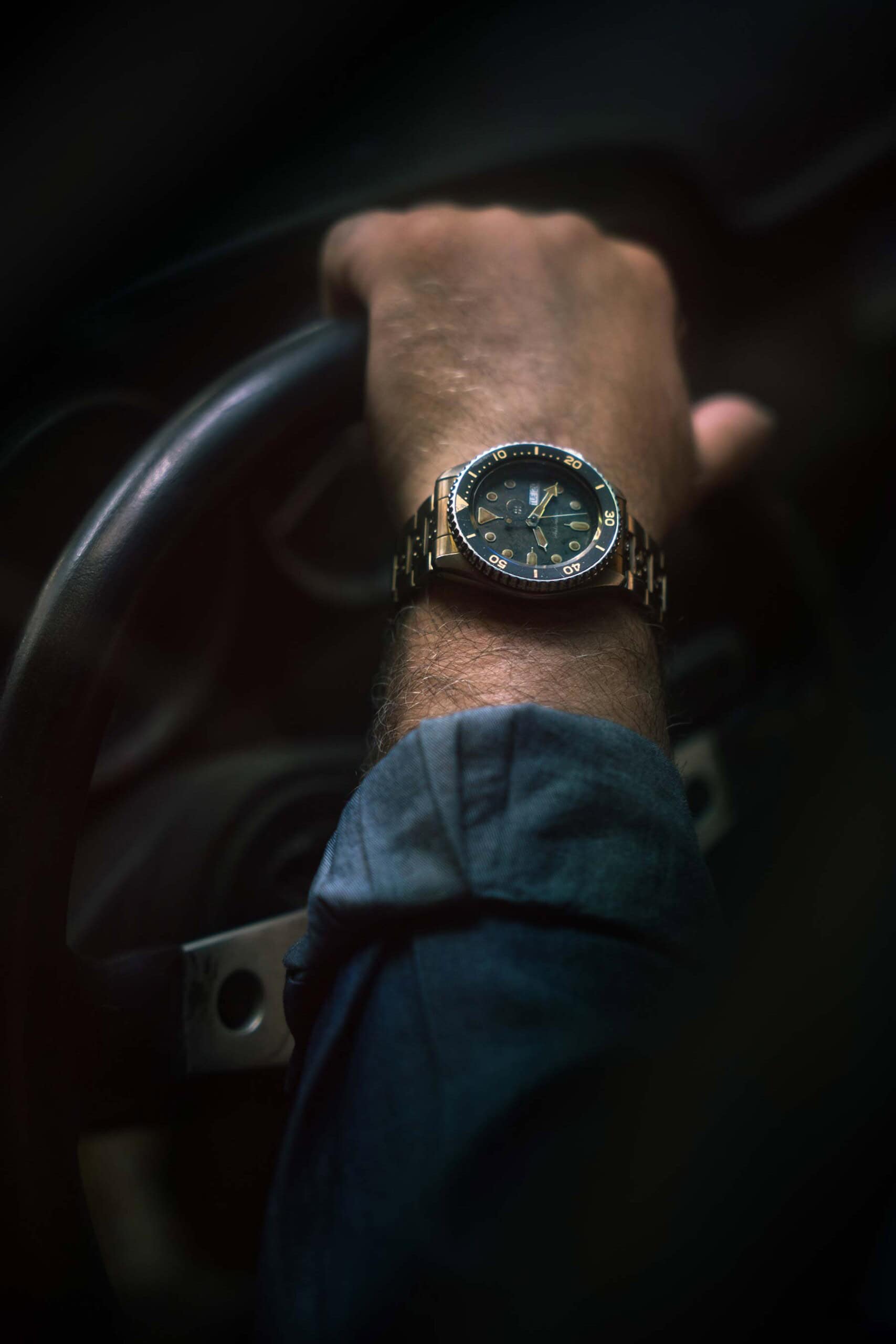
Gonçalves takes the approach of a storyteller to his cars and watches, and the most captivating pieces ROCS creates all start with a question and feature a conceptual vision that ties together their aesthetics and function. For example, the 911 that Gonçalves built in collaboration with documentarian Gary Hustwit [Objectified, Rams, Eno] is known as the Kronberg 911 and was built to answer the questions “What if German industrial design hero and godfather of minimalism Dieter Rams (a lifelong Porsche 911 devotee) and Braun had gone racing with a 911 in the late 1960s? What might that car look like today?” The car began life as a 1987 911, but was backdated to look like a ‘60s racer, given a competition-ready 3.4L power plant, and finished with a thoughtfully applied livery and patina to appear as if it were a retired race car that had been campaigned hard, tossed into storage for decades, and rediscovered as a “barn find” in present day. It’s also been treated to no small sum of Rams/Braun design easter eggs to lace the concept up, from the cloth that adorns its door cards to its custom fabricated engine deck lid – which pulls its design from the Braun L1 speaker.
ROCS’ most recent build imagines a vintage 911 in a place even further removed from New Jersey than Europe’s racing circuits in the 1960s. With ROCS Tatooine, Gonçalves has taken an all-wheel-drive 911 C4 Cabriolet from the ‘90s and delivered it to a galaxy far, far away with a transformation that envisions a rally-ready “Safari 911” style build within the Star Wars universe. The car draws inspiration from Luke Skywalker’s iconic open-top landspeeder and the textured, worn, and battered finishes of Star Wars’ “used universe” (as George Lucas once put it), and boasts a feast of a subtle details and easter eggs that will have any serious Star Wars fan’s Midi-chlorians absolutely tingling, but never get in the way of the overall look of the car. To the Star Wars agnostic Porsche fan, Tatooine will simply appear to be a killer (if unexpected) Safari 911 Cabriolet build. The car represents a deeply impressive balancing act between form, function, and vision, and savvy watch enthusiasts will be quick to call out the Autodromo logo that ROCS Tatooine wears on its fender flanks. The car culture-infused watch brand lent their logo to the project and also had Gonçalves do his AKA ROCS thing to a pair of their Group C watches, which were refinished and reimagined to match the patina of the car.
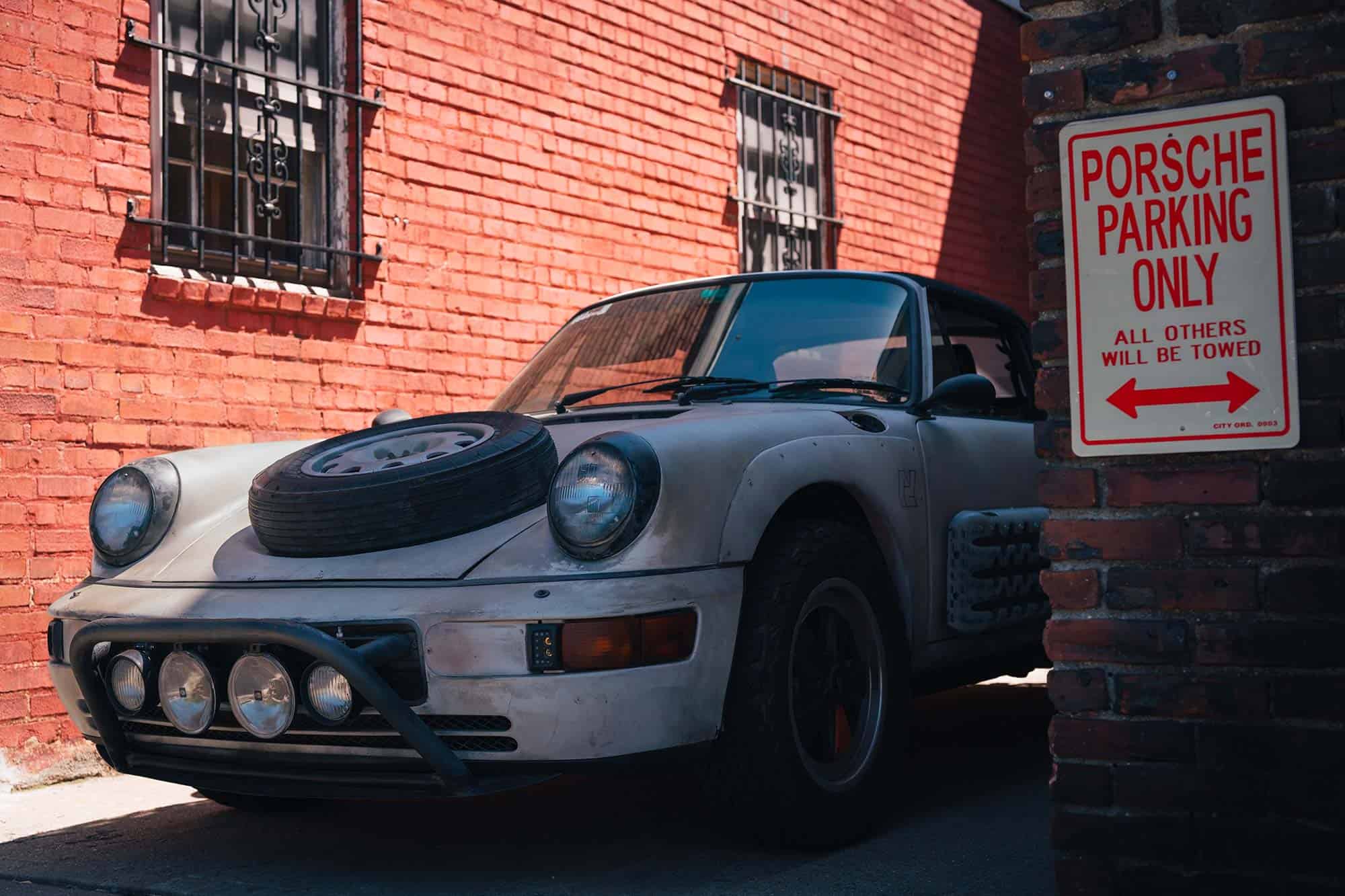
In the following interview, Rich Gonçalves takes us inside his world as a creative, traces ROCS odyssey from family-owned service shop to hot-rod art studio, gets into the details and nuances of the Tatooine build, and explains why Seikos and Porsche 911s have so much in common.
How did you get involved in the Porsche world?
I was born in France and my dad raced Porsches. He also owned a shop that originally specialized in Porsche, BMW, Audi, Rolls Royce, and Bentley. Between keeping up with the constantly evolving new tech and the specialized equipment that five different marques required, it became very expensive to run a multi-make independent service shop – so we started cutting back on the brands we’d work on until it became a Porsche-specific service business. For 15 years, we wouldn’t touch anything else.
As a kid I always wanted to be an artist, but I was disallowed that dream and thrown into the shop. I was told “there’s no money in art” and had a strict, immigrant father whom I wasn’t very familiar with. I was a bit scared of him, so I shut up and went to work. I did tech school and then ran our service shop for many years, but I always wanted to create and be artistic. I always saw custom cars as an outlet for that, but our shop was on the service side of the business. Eventually, I got burnt out on that, sat my business partner down, and said we either needed to move towards doing custom builds full-time or I was done. He agreed and I was able to come full-circle and tap back into the creative processes I was denied as a kid by integrating my art into the car world. ROCS is me correcting being denied the lifelong dream of an artistic career.
Killing a thriving service business to do customs is a pretty dramatic move to make! I can only imagine the feeling of relief and fulfillment ROCS’ success has given you.
Absolutely! There isn’t anything else I’d rather be doing and I’m glad I found an audience for what I build. I think the way you have to do these things is put the monetary aspect aside and focus on the human aspect of it – what really drives you. I figured if we were doing cool stuff and it was different enough, there would be a niche for the type of cars that I’m now known for building – the art cars or “dirty cars” with the patinas that ROCS is best known for. Those are what I really love creating. We also build more traditional concours level show cars, but the art cars are really the heart and soul of ROCS.
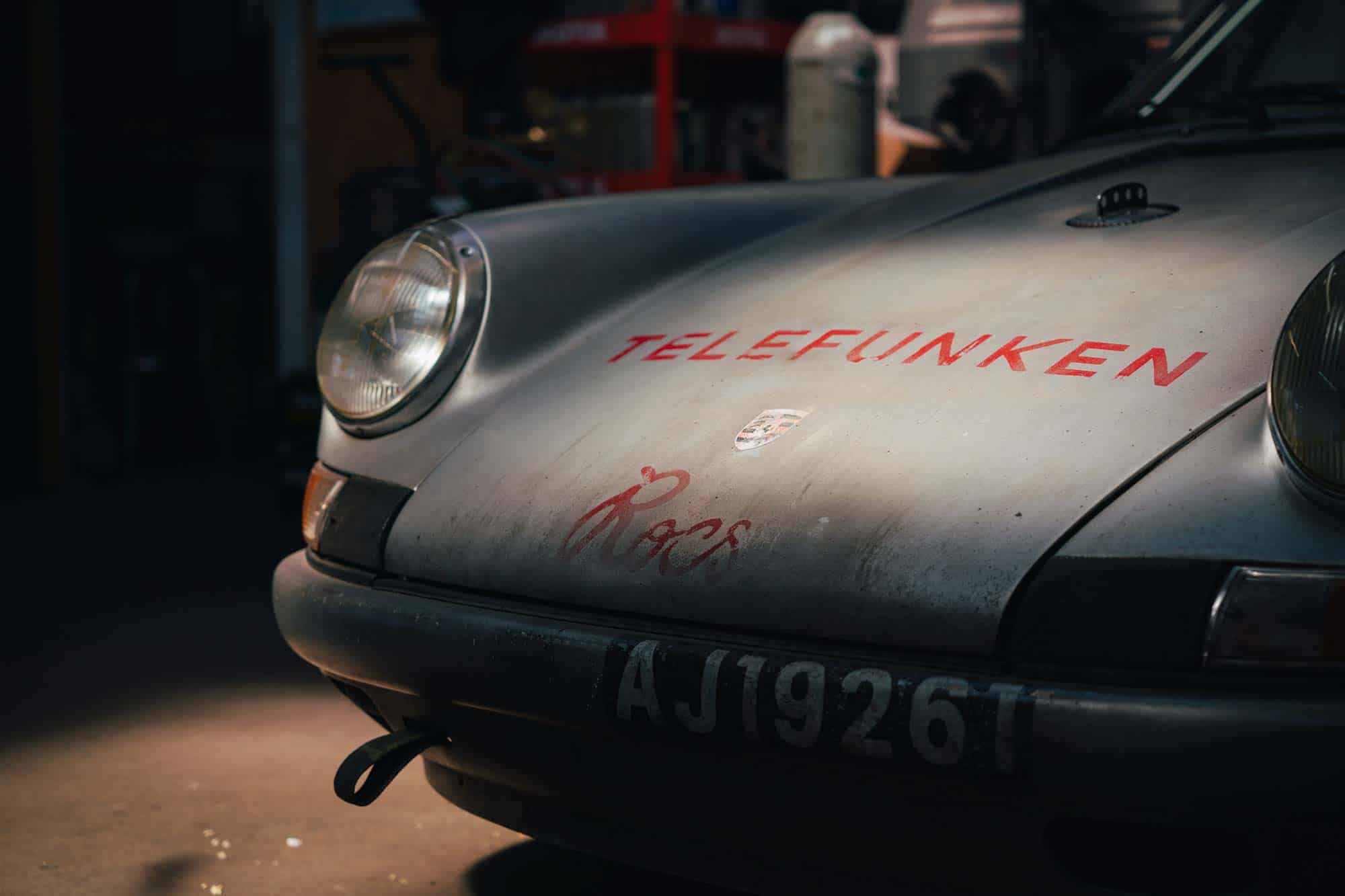
How do you work out the concepts for each of the art cars? Is it typically by client request or is it more often an idea you have that you pitch them?
They’re often very collaborative with the client. For example, the Kronberg 911, which I built for Gary Hustwit [Filmmaker, Objectified, Rams, Eno,], was quite exciting to build because it was so collaborative. Picking somebody’s brain and working through that process is a lot of fun. On the other hand, I’ve also enjoyed tons of creative freedom doing these cars and it’s mind-blowing to me how many clients will give me a very basic direction and simply ask to have my creative spin put on it because they want it to be my art. Not many guys in this world get that opportunity; with vintage and custom car builds, most clients want to control every detail.
You seem to attract some of the most adventurous air-cooled 911 clients out there. Is there a secret to pulling those types of projects?
Where ROCS has succeeded is that we’ve gained a captive audience that I think understands you have to look at our stuff as art beyond just being a cool Porsche 911 build. It’s functional and it lives in that world, but that art element isn’t common in the auto space, and art is worthy of investment, right? A lot of our clients love that the engagement you get with a distressed car is different than that of the typical, fully-restored “shiny” stuff. It’s amazing how much more engagement you get and how much more approachable these cars are relative to a vintage 911 with a concours level restoration. I drive the cars we make all the time and when I pull up at a traffic light in a pristine backdated hot-rod 911, nobody really engages with you. When you pull up next to the Kronberg 911 or any of the other patina cars we’ve built, it’s automatic. It brings people in, and I think there’s just something very human about a disheveled looking, but well-organized old 911.
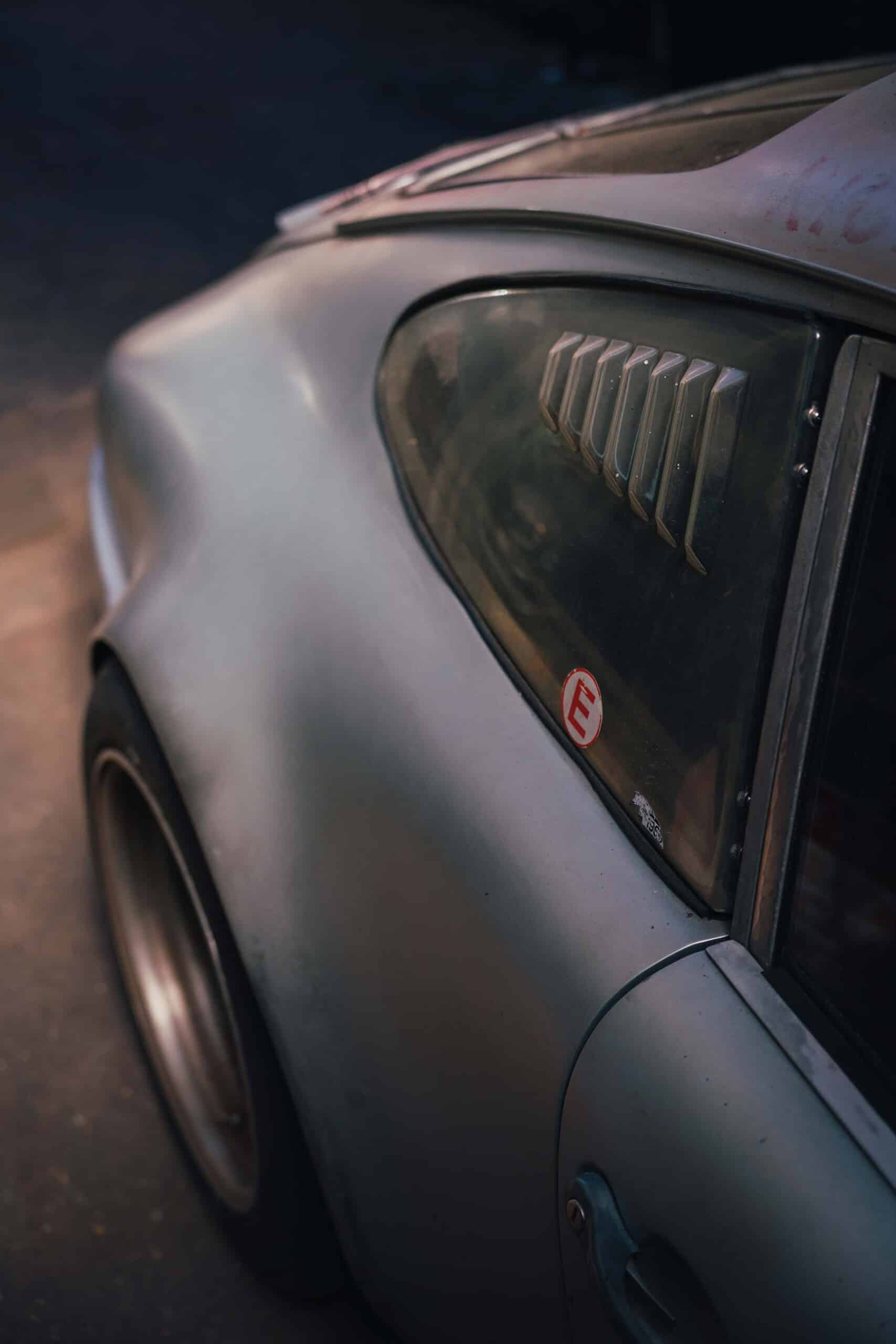
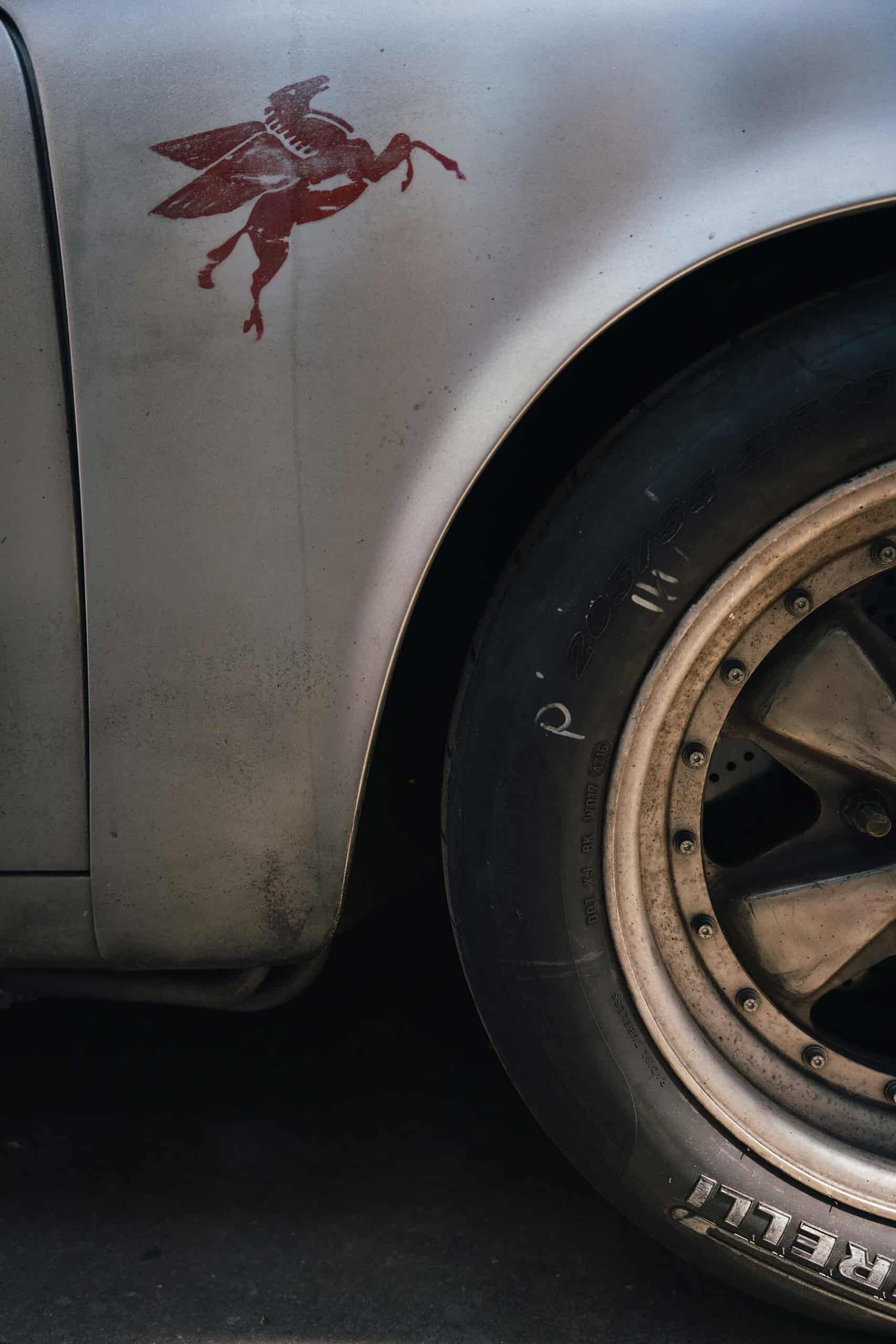
In the guitar world, it’s common to see high end guitars finished with artificial patinas and distressing to make them look and feel more like unattainable vintage pieces. They’re called “relic” guitars and the Fender Custom Shop pioneered the concept with wildly accurate replicas of famous player’s favorite guitars – right down to the specific damage marks. While they’re very popular now, they’ve also always been really polarizing. Have you found that divide in the opinion on your builds?
Absolutely, but by the same token, a relic’d guitar done by a known relic builder is always going to command a certain value, right? I think it’s a bit of a safe space now and it just comes down to properly researching and picking the right builders to work with. With Porsche, there’s still such a wide availability of donor cars that you don’t need to take a pristine example of an air-cooled 911 to turn into an art car, and the benefits of a distressed build are having something that makes you feel good, something that isn’t as ostentatious in the traditional sense, and something with an organized, deliberate presence. It’s a much easier car to live with and enjoy in my opinion. I keep using the word “organized” because anyone can scratch up a car and say it looks old or has a patina. Anyone can leave it outside for a while or dump acid on a panel or make it look disheveled. Right? There’s much more to my approach and to making a patina look believable. It truly takes so much more work to get the distressed cars to look the way that they do than it does to make a nice, shiny, concours condition car. People don’t realize that. It takes a lot more to bake in and forge a personality for a car beyond “I want it green with a tan interior and I’ll see you in a few months.”
Patina and wear is such an important part of the personality of any vintage object – watches, clothes, guitars, survivor cars. A graceful patina makes a huge difference and can put a piece over-the-top in collectibility, but artificially patinated watches, like those you make as AKA ROCS, are still ultra polarizing.
I cannot tell you how much trepidation I had with the first distressed build that I unveiled, which was the silver 911 called the Panamericana. That was really the lead car and that was the first time – to my knowledge – anyone had actually treaded into this water in the Porsche space specifically. I knew that it was either something I had to do 110% correctly and the car really had to pull the trick off or I was going to be out-of-business.
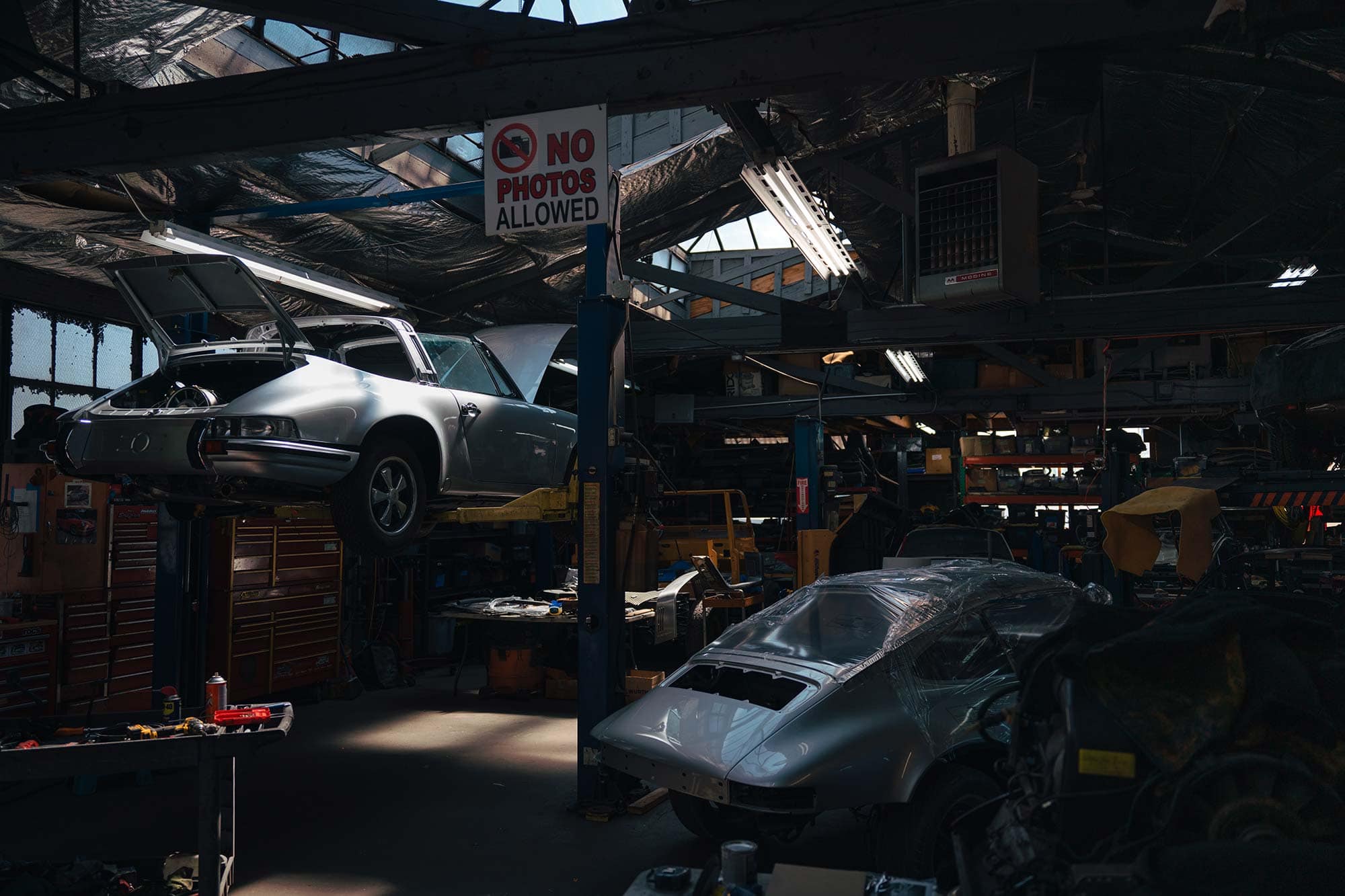
Can you explain what the extra work in crafting an art car involves?
When I build a car, I ask ‘What are we trying to achieve here? What’s the story behind the concept and how would that story affect what this car looks like? What set of circumstances brought it to this point visually?’ With the Panamericana, which is a tribute to Fletcher Aviation and the Mexican Pan-Am race, the concept was an old race car that was put into a hangar and found 50 years later. There was an absence of sun damage, there was an absence of rainwater, it was just left as it was – but protected in certain ways. So it would have aged differently than a lot of classic “barn finds.” You’re not going to find any fake rust on our cars, and that’s one of the first things that people gravitate towards when doing a patinated car because it screams “old.”
People also tend to sand through layers of paint as a form of faux patina, or they expose bare metal panels, but that always looks ridiculous because cars never sand their own paint down and nobody in their right mind allows a car to go bare metal for long. Trying to replicate real patinas is more than just beating up a car to make it look used. Our cars incorporate patina as means of storytelling. How does color decay? How does it self-texture given a certain set of circumstances?
You recently applied that storytelling approach by pulling from a fictional universe with the Tatooine/Star Wars 911 – which is an incredibly hard concept to pull off without being ridiculous. What exactly is that car at its core and how did you approach applying a storyteller’s touch to it without going too far?
The car itself is a 1990 964 C4 Cabriolet, which is a spec that isn’t super attractive to the typical vintage 911 enthusiast as they tend to prefer coupes. If they do want the all-wheel-drive C4 version, they usually live somewhere that doesn’t make sense for a convertible. It was kind of a car for no one that I wasn’t sure what to do with for a long time.

Something I’ve thought about for many years is how Star Wars and Porsche actually have had very similar cultural impacts. They’re both established in the cultural lexicon in a similar way, and they both have fanatical fanbases. I started asking myself what elements I could pull in to make it a Star Wars 911 without being silly and the build became another big trepidation moment for me, where I knew I was either going to nail it or get laughed out of business. I liked that the car was a Cabriolet and Luke Skywalker’s iconic landspeeder was an open-top vehicle. That was a no brainer. I’d also never seen anyone turn a 911 Cab into a safari-type 911 while keeping it a true Cab and not putting a hardtop on it or reinforcing it – which of course makes sense for competition. One of the other criteria I had for myself was that it couldn’t say “Luke Skywalker” or “Darth Vader” or have Star Wars imagery on it in a super direct way. It needed to live through the small touches that brought it into that universe and it had to be more subtle and nuanced. But the core basis behind the concept was really just to bring these two entities together that I always felt belonged together.
The car hits the mark in such an unexpected way. Could you go into some of the small details that you pulled from the Star Wars universe that the layman might miss?
The rear spoiler design I used was taken directly from the Millennium Falcon, and using a light blue New Jersey vintage license plate – mounted up high – was meant to evoke the Millennium Falcon’s engines. The way I aged and weathered the paint was meant to mimic the finishes seen on vehicles in Star Wars, which had gone through the extreme temperature shifts of space. I made sure the interior felt disheveled and used, but not destroyed – just enough wear to match the vibe of vehicles and devices seen in the movies. The single orange spoke on the car’s wheels are a nod to the orange pauldrons worn by Stormtrooper Commanders on their shoulders, like you see on Tatooine in the first film. The more direct, but subtle touches were removing the “Carrera 4” badging and painting it on the same spot in Aurebesh [A fictional alphabet and font from Star Wars]. The shift pattern on the knob is in rough Aurebesh as well. The car is really about how all of these little details add up. It’s lots of little things that stand out automatically to big Star Wars fans, but don’t really distract from the car’s overall presence. I really didn’t want it to feel like a marketing exercise for Star Wars being applied to a Porsche 911. The details are nuanced, but the overall car screams Star Wars in what I think is the right way. I struggled with that because it’s easy to throw every idea you have at a car and lose any sense of the original concept.
What about the functional side of things?
I also had to keep the car a functional four-wheel-drive, safari-type 911 – which has its own requirements. Finding balance between the functional things and the Star Wars concept was really important, but they also work with each other because Star Wars has so many harsh environments and safari 911s are built specifically to tame those in rally racing. That side of the car’s identity comes from a truly off-road capable suspension system and tires, mounting an additional four lights on the hood, and the bumper delete. It has K02 tires that will actually run fine without any pressure in them, and the spare on the hood is a factory space saver – just blown out a bit. It has another one in the factory spare position because that’s actually part of the car’s front crash structure. It’s very comfortable and very compliant to drive on the street, almost like a normal 911 – even with the big tires. But it’s also a totally capable safari, off-road vehicle. We’ve also done custom headlight rings for the main lights from an earlier 911 known as “sugar scoops” and they were hand machined to fit over a 964’s headlights and painted black to give a high contrast Stormtrooper aesthetic effect. The skid plate recovery ramps the car carries on its doors tie into the safari concept as well, but you’d certainly need them on a sandy planet like Tatooine.
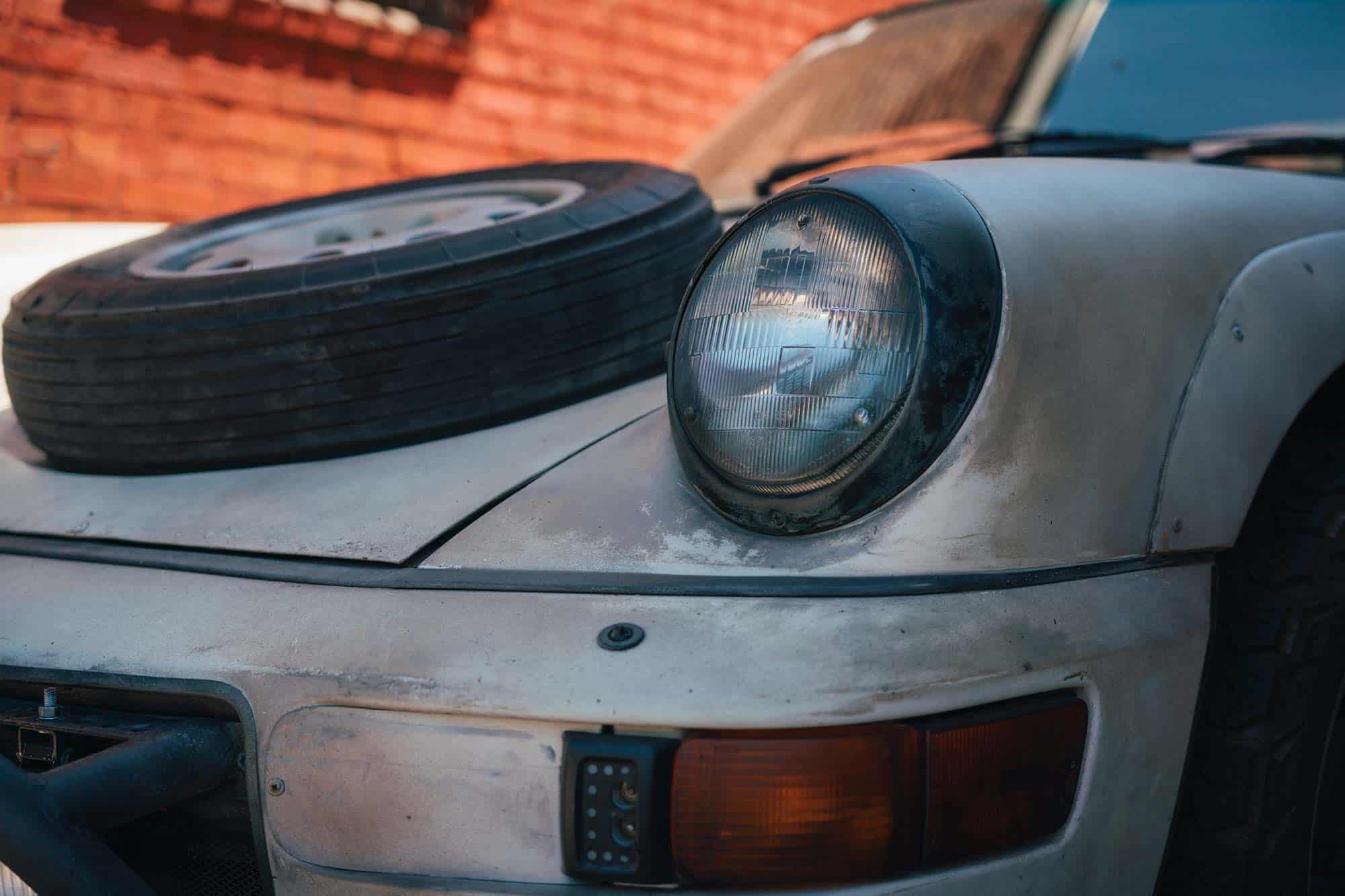
Do you sketch your ideas on paper first? Is there a fully considered concept before you dive into fabricating things, or is it more improvised?
It varies. With the Kronberg car, because Gary is so deep in the design world, it was more conceptualized before building than is typical for me. I like to go off-the-cuff and I like everything to feel organic in all aspects of life, so my artistic process is very organic and flows like that, too. I don’t like anything feeling forced and that means I do a lot of trial and error in my work. The way the Tatooine car appears now is actually the third iteration and it took a lot of time to get there. Builds like these are all about taking chances; choosing a convertible for a safari build was a big chance that I don’t know would have worked had it not had the Star Wars landspeeder connection. That specific combination of concepts gave what I felt was a pretty useless car a purpose. It honestly sat in my garage for years untouched waiting for that purpose to make sense.
How has your art practice evolved over the years and how does it work between your visual art, the Porsche builds, and the AKA ROCS custom Seiko watches?
In high school, art was my world. I was scouted by Parsons and nearly promised a scholarship, but that sadly didn’t work out. My dreams were shattered and I went to work in the shop with my dad. Around 2005, I went back to my birthplace, Paris, and came back deeply inspired. There was a wide rebirth of the arts for me after that trip and the desire to be an artist crept back into my psyche. So I picked up the brush again. I didn’t show my work to anyone for about 10 years. Then I was suddenly selling stuff. It just happened organically. I developed the artwork that I do on the cars in tandem with my fine arts practice; all of the intermixing of colors, understanding how color works together and how color breaks down, the graining and the texturing of finishes – it all worked in tandem between cars and visual art. They played into each other and helped evolve the other. Then, I started to apply that work to watches.
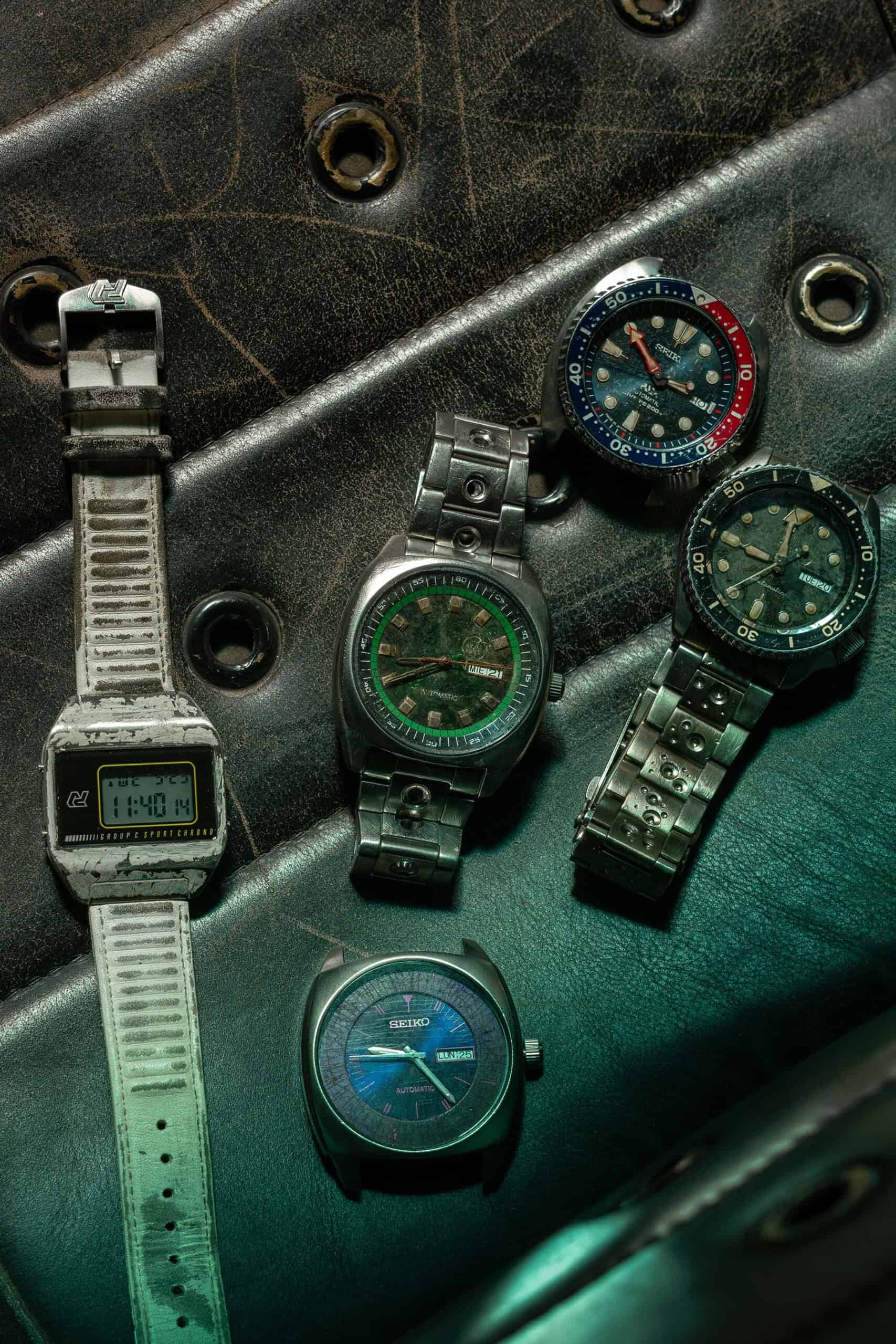
I got heavily into watches and wanted to know what made a watch more unique than another watch. What made one watch special? What watches share the same movements and concepts? I felt really compelled to explore that. Once I realized the level of specialty required to make certain really expensive movements, I found myself looking for the watch equivalent of a 911: something that could be a workhorse, but had a unique thing beyond reliability. Seiko was perfect; they’re robust, affordable (don’t forget that old 911s were for a long time, too), easily repaired, and they had a huge following. So I started to experiment by aging Seikos the same way I do 911s.
It takes a special cocktail of confidence and ignorance to modify a mechanical watch for the first time. Did you have any direct guidance when it came to putting the revamped watches back together again properly, or did you have to burn a few to get the hang of it?
I think I messed up once. The internet was there to help and I started by doing those modifications just for myself. As I put them up on Instagram, I had guys going “Hey! That’s pretty cool, where’d you get that? I want one!” Next thing you know, I’ve got guys in Japan buying them from me and I grew a little market. My watches aren’t breaking any sales records or anything, but I’ve got a steady flow of collectors that want them, so I keep making them.
Honestly, there’s enough guidance out there these days that if you’re interested enough in anything, you can learn how to do it these days. I don’t think we’re born with any sort of innate abilities; I think everyone has the ability to be an artist. Everyone has the ability to be creative. It’s just about the amount of effort you put in. Ultimately, how much you pursue anything defines whether you’ll succeed or not. There’s enough info out there these days.
One of the most important things to me in anything I make is that it’s got to look right, but it’s also got to function right. They both need to be addressed. I can take any watch and make it look cool, but one of the important factors that led me to working on Seikos is the fact that I can get brand new timepieces to modify and know they’ll work well because Seiko is such a dependable brand. So the technical aspect is pretty much covered unless I mess it up in my process and that doesn’t happen. I’ve learned enough of the craft to be able to do what I need to do, but I’m not a watchmaker and I’m not going to fully disassemble a movement and put it back together for you.
The patinas and visual ideas you apply to your Seikos are really over-the-top. I’m sure they’re polarizing – even more so than your cars. How did you land on that extreme style? And is there a profile for your typical watch client?
I think the people that buy my watches understand them as a piece of art first, and a watch second. They understand that I’m trying to tell a story through the finishes. My watches all get a name that’s specific to the watch’s concept. For example, I made one called the Deep Walker for a client that’s a geologist; I tried to understand who he was as a person and I tried to imagine what the watch might look like after decades underground on the wrist of a miner. It’s the same approach to storytelling that my cars have and that my art has. I’ve applied that approach to watches with a space exploration theme, like the one I call the Kuiper Belt. The Kuiper Belt is a ring of asteroids and ice floating around space; if you look at the bracelets of the Kuiper Belt watches are pockmarked and dented as if they were hit by asteroids and space junk. Every touch is there to tell that story and they need to be dramatic to achieve that. I think that’s why they’ve been successful.
You modified a pair of Autodromo Group C watches to tie in with the Tatooine 911 build. Tell us about those watches and how that partnership happened.
Bradley [Price] at Autodromo is such a sweet guy. I’ve always been a huge fan of his industrial design and I always thought that Bradley was the most creative guy making that level of watch. The more I looked at the Autodromo logo, the more I thought it would work for the Star Wars car and that it would look amazing on the flanks of the car like the Mobil Pegasus or the Heuer shield logo on racing Porsches. Obviously cars and watches go hand-in-hand and there is such a strong precedent with the Heuer logo, but it needed to be something less instantly recognizable than a major brand so it didn’t break the 4th wall. It needed to fit the look of the car. So I called Bradley and told him what I was up to, sent him some photos of the car, and he loved it and he actually suggested putting the Autodromo logos in the same places I was already thinking of! Naturally I did two Autodromo watches to match the car – one for each of us. They’re slightly different from each other and we weren’t planning on turning it into a series of watches or anything like that – though if someone wanted one, I’d certainly make it. But it was just two people working together on an idea just for the sake of it – nothing pre-calculated, no “We’re going to hit the market with this thing!” It was very organic. I was very appreciative that he was on board and lent his brand’s logo to the project. To me, it’s just another really nice nod of acceptance of what I do by someone I respect.

We all ultimately want to be accepted for our art. Somehow, we’re all trying to state something. If you’re a creative person, you’re trying to convey a message, so anytime someone wants to do a story on my work or collaborate on something like this car, I can’t begin to explain what an honor it is because the work is who I am as a person.









 Featured Videos
Featured Videos





